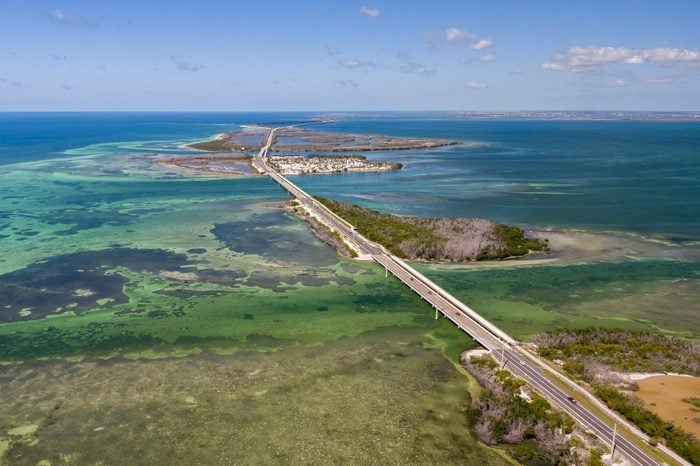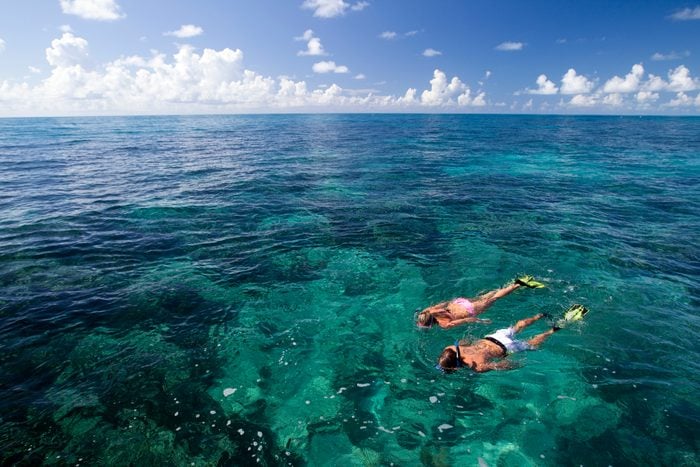 Stephen Frink/Getty Images
Stephen Frink/Getty Images
Key Largo
Mile marker: 108–90
The first of the Florida Keys you’ll hit after driving about an hour south from Miami en route from Key Largo to Key West is, well, Key Largo. Often referred to as the Dive Capital of the World, Key Largo includes one must-see stop: John Pennekamp Coral Reef State Park (MM 102.5), the first underwater preserve in the United States.
Experienced and novice snorkelers and SCUBA divers will be enthralled by the teeming marine life that lives just below the water’s surface, like parrot fish, barracudas and sea turtles. More experienced divers enjoy exploring the USS Spiegel Grove, one of the largest ships ever intentionally sunk to create an artificial reef where pretty fish can thrive.
Back on dry land, travelers can wander nearly six miles of trails at Dagny Johnson Key Largo Hammock Botanical State Park, home to more than 80 species of plants and animals. You can also peruse the work of local artists at myriad galleries.
Best beach: Cannon Beach, found within John Pennekamp Coral Reef State Park, has shallow waters that are perfect for wading. You may even spot cannons and anchors on the beach that remain from a 1715 Spanish shipwreck.
Where to eat: Dig into the catch of the day at The Fish House, Key Largo Conch House or Snook’s Bayside Restaurant & Grand Tiki Bar, some of the best traditional restaurants in the area. If you’d rather turf than surf, check out Jimmy Johnson’s Big Chill.
Where to stay: If you can’t get enough of the underwater world, stay at Jules’ Undersea Lodge, the world’s first underwater hotel. If you’d rather keep dry, try the adults-only Bungalows Key Largo.
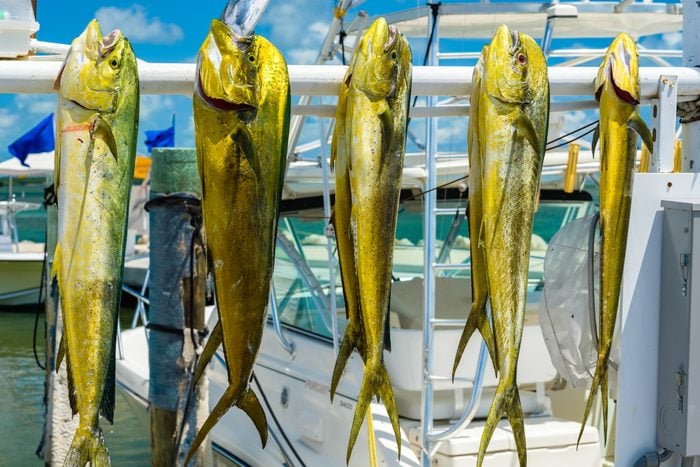 RAUL RODRIGUEZ/Getty Images
RAUL RODRIGUEZ/Getty Images
Islamorada
Mile marker: 90–63
Next up en route from Key Largo to Key West is the fisherman’s paradise known as Islamorada. Considered the Sport Fishing Capital of the World, it’s where backcountry sport fishing and saltwater fly-fishing got their start. Countless seasoned boat captains are ready for hire to take you out to catch the wahoo, marlin, mahi-mahi and tuna that swim in these waters.
There’s an even quirkier way to interact with fish here: hand-feeding the tarpon off the docks of Robbie’s Marina (MM 77.5). Since 1976, countless Keys visitors have stopped to feed them, and more than 100 kinds of fish gather at the docks for their daily snacks. Feeding the fishies there is so popular, it’s been named the No. 1 activity in all the Florida Keys.
Islamorada is also a terrific spot to kitesurf, stand-up paddleboard, go for a hike or take a bicycle ride. Stop by the Laura Quinn Wild Bird Sanctuary, where injured or displaced birdies now make their homes. Or visit the History of Diving Museum, which boasts one of the world’s largest collections of diving helmets.
Best beach: Anne’s Beach is popular with families (and dogs) because of its shallow waters and lack of waves. Take a walk along the boardwalk or enjoy a picnic at one of the covered tables.
Where to eat: For a quintessential casual Florida Keys meal, go to the Hungry Tarpon. If you want more elegant fare, make reservations at Chef Michael’s for creatively inspired local dishes.
Where to stay: When it’s time to lay your head for the night, check in to one of the new oceanfront suites at Cheeca Lodge & Spa, or your own cottage at The Moorings Village & Spa.
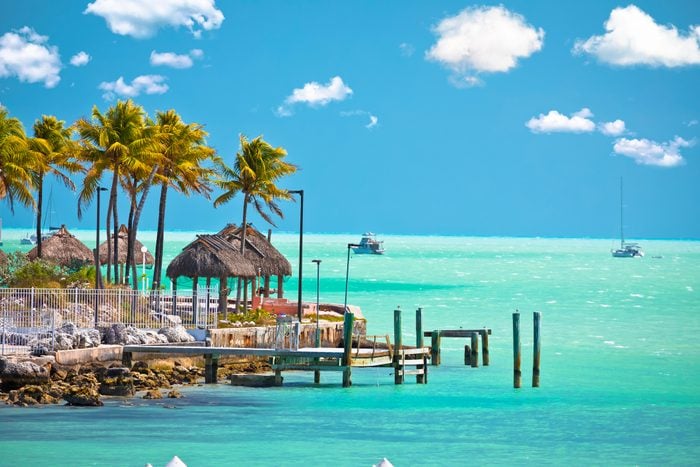 xbrchx/Getty Images
xbrchx/Getty Images
Marathon
Mile marker: 63–40
Marathon is the island chain’s top boating destination—and for good reason. The area boasts nearly 2,400 boat slips and plenty of facilities to accommodate sailors passing through. But you don’t need your own boat to enjoy Marathon and its waters.
For a truly different experience, hop on over to Cruisin’ Tikis and have a floating tiki bar adventure. Sunset, mangrove and harbor cruises are all available, as is a swim-stop cruise for a chance to jump into the water.
While you’re here, you should also visit Pigeon Key, an island that is accessible by boat, trolley or walking the 2.2-mile Old Seven Mile Bridge. It has a museum to explore, either on a guided tour or on your own. The Bridge is open for walking, running, bicycling, rollerblading and, of course, watching the killer sunrises and sunsets.
Best beach: Sombrero Beach is one of the prettiest beaches in the Florida Keys—not to mention one of the best beaches in Florida. And it’s not just popular with humans; sea turtles nest here between April and October.
Where to eat: For any meal, stop by Castaway, which has been serving guests for more than 70 years. Or make a night of it at Hide Away Café, which has an extensive wine list.
Where to stay: The Faro Blanco Resort & Yacht Club is set on the waterfront and gives you a taste of marina life. Lime Tree Bay Resort on Long Key has spacious townhomes for rent.
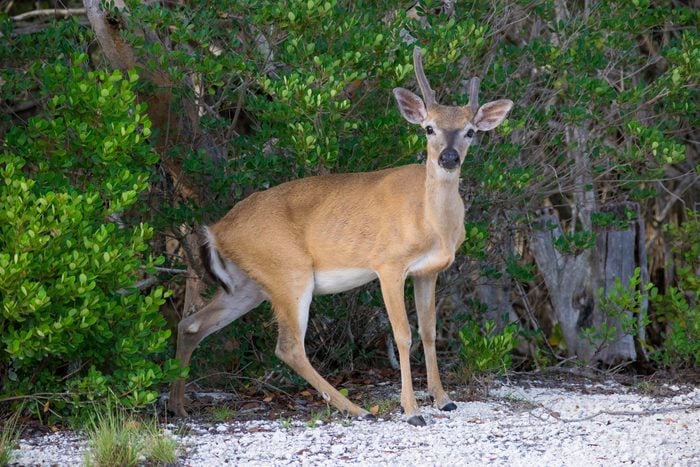 MichaelWarrenPix/Getty Images
MichaelWarrenPix/Getty Images
The Lower Keys
Mile marker: 40–4
After crossing the Old Seven Mile Bridge out of Marathon, you’ll find yourself in the Lower Keys, where natural habitats and wildlife refuges thrive. It’s no wonder this part of the Florida Keys is known as the Natural Keys. You might even want to consider taking an electric vehicle on this road trip so you don’t disturb the animals.
Your best chance to spot a native Key deer, a subspecies of the Virginia white-tailed deer that somehow made its way south, may be in the National Key Deer Refuge, comprised of 9,200 acres stretching from Bahia Honda Key to Sugarloaf Key on the edge of the Gulf of Mexico. More than 20 endangered and threatened plant and animal species can be found within the refuge. Take a quiet walk at dusk or dawn for your best chance to glimpse a Key deer, or join a ranger-led tour to learn more about the area.
Aside from all the eco-friendly fun, Stock Island is well worth a stop. Their maritime history goes back generations, and the marina is filled with shrimping and fishing boats. Artists have been flocking to Stock Island, too, and share their works in galleries dotted across the small island.
Best beach: The shallow, clear water and white sand at Calusa Beach make it a locals’ favorite. The beach is a perfect spot for snorkeling too.
Where to eat: In addition to the freshest of seafood, Big Pine Rooster serves up ribs and a special-recipe meatloaf. Or sip like the locals at No Name Pub, located on Big Pine Key.
Where to stay: Consider the waterfront Sugarloaf Lodge, stay in an Airstream at Big Pine Key Resort or pop a tent on one of the reserved campsites at Bahia Honda State Park.
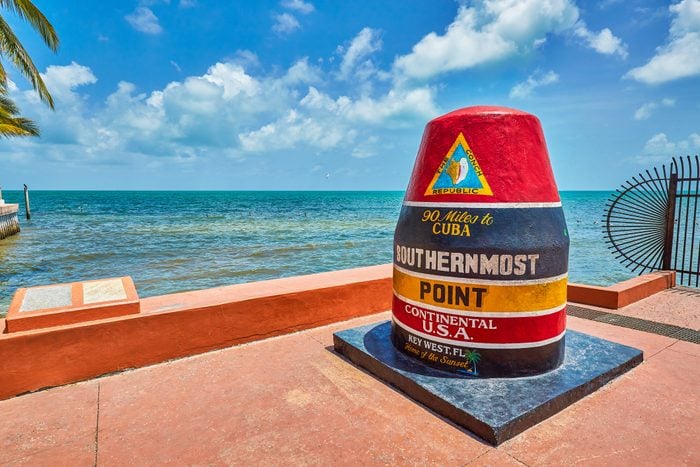 Peter Unger/Getty Images
Peter Unger/Getty Images
Key West
Mile marker: 4–0
You’ve made it to the end! Closer to Cuba than Miami, Key West is known for its nightly sunset celebrations, party atmosphere and laissez-faire vibe, but it’s really so much more.
If you’re a writer or bookworm, you’ll certainly want to make plans to visit the Ernest Hemingway Home & Museum, where you should keep an eye out for the famous six-toed cats. Then wander through Key West’s Bahama Village, a 12-block area of historic homes and restaurants.
Consider a day trip to Dry Tortugas National Park, about 70 miles west of Key West in the Gulf of Mexico, where you’ll find some hidden gems. The island, accessible by boat or seaplane, is popular for snorkeling and feeling like you’re on your own private island, not to mention touring the Civil War–era fort.
Best beach: Fort Zachary Taylor Beach—or Fort Zach, as locals call it—predates the Civil War and boasts the island’s very best sandy stretch.
Where to eat: No visit to Key West is complete without a meal at Blue Heaven, where you can dine with wandering roosters for breakfast, lunch and dinner. Or snag a spot on the tiny balcony at Santiago’s Bodega for tapas and flowing wine.
Where to stay: The boutique Gardens Hotel, the adults-only Kimpton Hotels Ridley House or the new Capitana Key West, to name a few. Wherever you stay, you’re sure to find your place in Key West, and it’s likely you’ll follow so many others’ lead and start planning your return visit before you even leave.
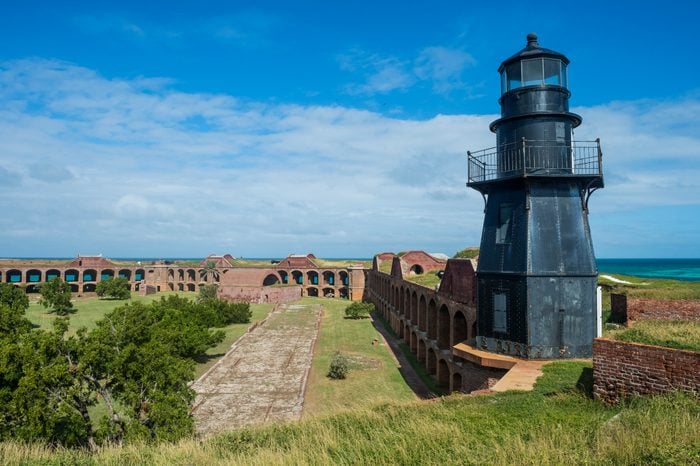
Art and history in the Florida Keys
Road-tripping from Key Largo to Key West, it’s easy to appreciate all the natural beauty. That said, the Keys aren’t just a terrific destination for eco-travelers, but artists and history buffs too.
It’s easy for artists to find inspiration throughout the Florida Keys. Fortunately for road-trippers, there are many spots to stop and admire their work. One of the largest artists’ communities in the Florida Keys is Stock Island in the Lower Keys, just about three miles from the commercial area of Key West. What was once a shrimping boat marina is now a blend of fishermen and painters, sculptors and other artisans who have created an energetic and supportive community.
For history buffs, in addition to Pigeon Key in Marathon and the Civil War–era Fort Jefferson in Dry Tortugas National Park, other must-stops in Key West include the Audubon House & Tropical Gardens, Harry S. Truman Little White House and the Southernmost Point in the continental United States.
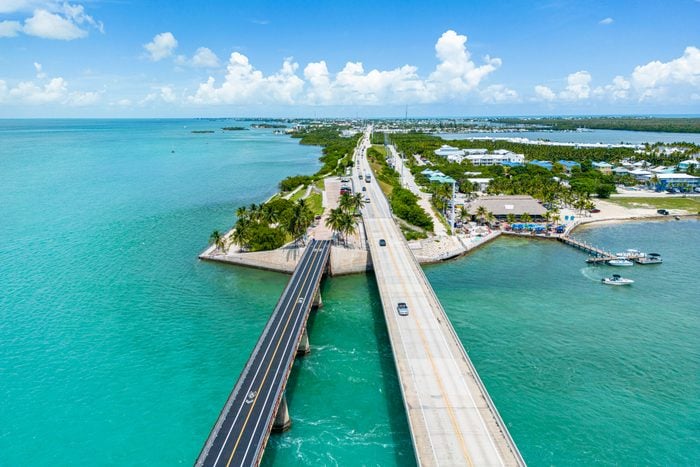
Planning your Florida Keys road trip
Now that you’re inspired to hit the road, it’s time to start planning. After budgeting for a road trip, your next step is to decide whether you will travel south from Key Largo to Key West, or north from Key West to Key Largo. Or maybe you’ll opt for a roundtrip.
If you’re starting off in Key Largo, it’s important to note that the Florida Keys Overseas Highway begins at the Miami-Dade/Monroe County line. So if you’re flying to Florida, Miami International Airport (MIA) is the way to go. If you begin in Key West, the airport (EYW) is on the island.
If you’re already driving one of the best road trip cars to get to Florida, you’re all set. But if you need a loaner, choose one of the best cars to rent for a road trip. Consider packing these road trip essentials and download some of the best podcasts for road trips to make the miles fly by.

